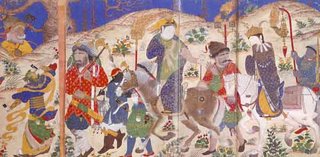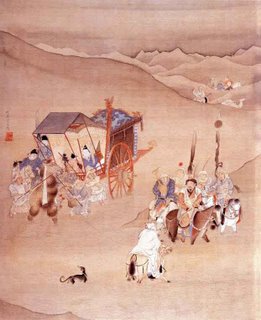By Orhan Pamuk
I am not a great fan of the Nobel Prize for literature, which seems partial to books heavy of meanings but devoid of enjoyment. My Name is Red (Red), the 2006 winner, is no exception. Set in 16th-century Istanbul
Not much of a good fiction
The book is written in a somewhat unusual way, narrated by not only main characters, but also objects such as drawing figures, the color red, and, even the abstract “death”. However, it reads as if, or matter-of-factly, being told by a single person (the author): there is barely any distinction of personalities, perspectives, thoughts and narrative styles. Thus, many details and figurative languages are repetitive and get tiresome towards the end. All characters also act in confusingly erratic ways to defy any rational understanding of their behaviors or thoughts. Ultimately, the stories and characters were so boring and unreal that I was mostly disengaged, scarcely affected by the brutal killings, exotic settings or erotic love scenes.
Translation might be part of the problem, too, sluggish and lame, with occasional grammar mistakes and without discernible literary style.
Some history, culture and … desperation
However, I did end up with a very positive appreciation of the book, enjoyed an introduction to the Turkish history and culture.
The Turkish culture, as depicted in the book, is a religious one to the extreme, which worships Allah AND belittles human lives. The belief is so pervasive that it reflects in every single thought of every individual. Thus, drawing is not a personal interest but a way to glorify Allah, through the eyes of Allah, as best guessed by the merely human. The inevitable limitation and diversity of the human perception of God is the root of all agony, melancholy, dispute and hatred. And the unquestioned belief in a lifeafter leads to the “logical” negligence of human suffering, the embracing of extreme self-sacrifice, and the justification of ruthless means to “right the wrong”. The stories in this book were not even that extreme yet this distinctively different perspective prevailed and impressed me greatly. When this life is but a brief passage to the eternal happiness, what is it to cherish? When human beings are but servants to the grace of Allah, how much could individuality matter?
And when it has penetrated, settled and redefined a culture through time, this mentality inevitably exacerbates the misery of human lives with fear, humiliation and suppression, because human beings are also born with unspeakable thoughts, uncontrollable desires and, for those miniaturists, insuppressible inspirations. To draw a few beautiful pictures.
The Western culture, as symbolized by the Venetian art, dealt a deadly blow to this suppressive yet self-sustainable tradition. It is fundamentally different not only in the art form but also in the philosophical belief. Thus, to accept is to give up one’s own identity; yet to reject is to acknowledge inferiority in spite of one’s innate genius. Such is the desperation. It’s not a struggle how paintings should be done but how life should be lived.
The art and the celebrated Chinese influence
I wondered about the famous Turkish paintings described repetitively in the book and was delighted to find some at the publisher’s website (http://www.randomhouse.com/knopf/authors/pamuk/desktopnew.html).
These colorful and elegant pictures bring about justification to the melancholy mood of the book, about a time long passed by.

A pleasant surprise is the highly regarded Chinese influence on
One painting described in the book is about a Chinese bride’s gloomy journey to her foreign husband’s
 home. It's got to be the Turkish version of “昭君出塞”:
home. It's got to be the Turkish version of “昭君出塞”:
 home. It's got to be the Turkish version of “昭君出塞”:
home. It's got to be the Turkish version of “昭君出塞”:
咏怀古迹五首之三
杜甫
群山万壑赴荆门,生长明妃尚有村。
一去紫台连朔漠,独留青冢向黄昏。
画图省识春风面,环佩空归月夜魂。
千载琵琶作胡语,分明怨恨曲中论!
So it has been a worthwhile and memorable reading experience after all.
附图:土耳其昭君 (from The Topkapi Saray Museum: The Albums and Illustrated Manuscripts.);
中国昭君 (作者:佚名;来源:互联网)
中国昭君 (作者:佚名;来源:互联网)

No comments:
Post a Comment